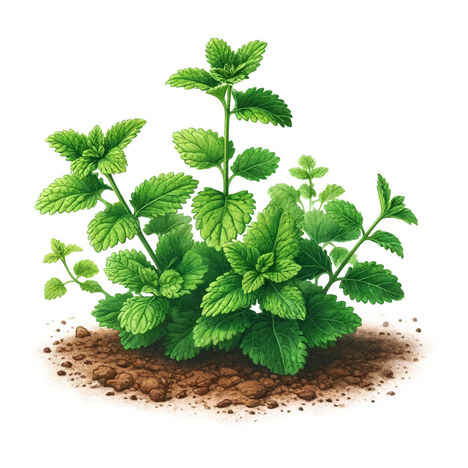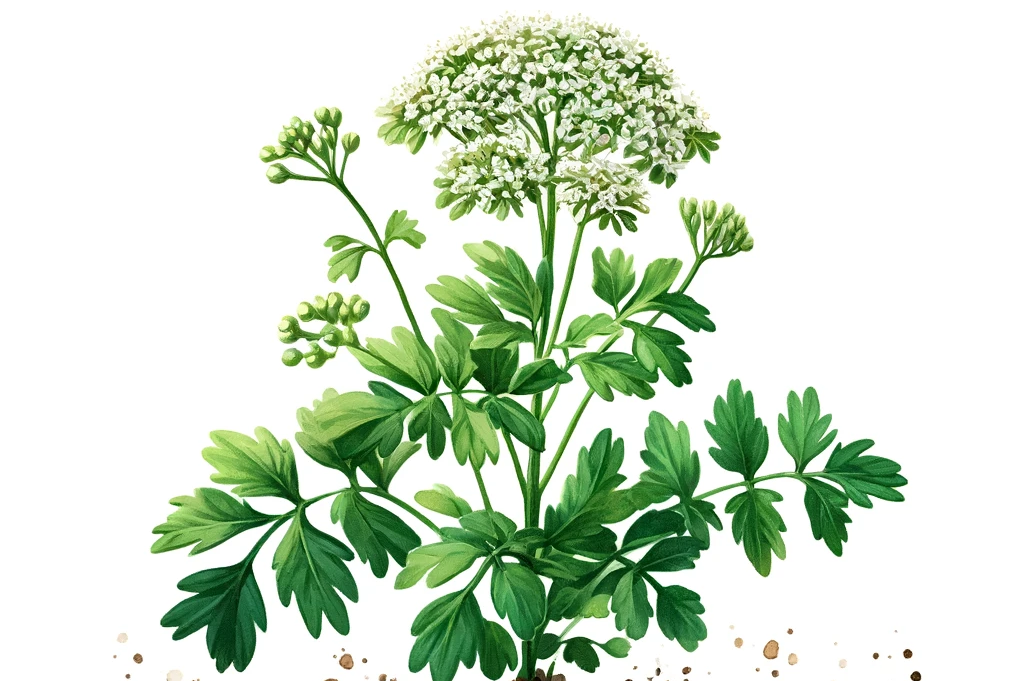Lemon balm

What is lemon balm and how does it work?
Lemon balm belongs to the labiate family and is related to mint, sage and thyme. It has small white or pink flowers that attract many bees. The leaves of the plant contain essential oils, tannins, flavonoids and other ingredients that can have various health benefits.
Melissa has a particularly calming effect on the nervous system. It can help to reduce stress, anxiety and restlessness. Lemon balm also has an antispasmodic and digestive effect. It can help with gastrointestinal complaints such as flatulence, cramps or diarrhea. Lemon balm also has an antibacterial and antiviral effect. It can help with infections of the respiratory tract or skin. Lemon balm can also speed up the healing of wounds and relieve itching.
How can lemon balm be used for dogs?
There are various ways of using lemon balm for dogs. One option is to make a tea from the dried or fresh leaves and give it to the dog in its drinking water or sprinkle it over its food. You can also add a few drops of lemon balm oil to a bowl of water and let your dog sniff it. Or you can put a few drops of lemon balm oil on a cloth or toy and offer it to the dog to chew or play with.
Another option is to buy or make an ointment or gel from lemon balm extract and apply it to the affected areas. This can help with skin problems such as eczema, rashes or insect bites. You can also make a compress from a cloth soaked in lemon balm tea and place it on the wound.
The dosage of lemon balm for dogs depends on the dog's size, weight and state of health. If in doubt, you should always ask a vet for advice before giving your dog lemon balm.
What are the disadvantages of lemon balm for dogs?
Lemon balm is a relatively safe plant for dogs when used in moderation. However, there are some possible side effects or risks to be aware of.
For one, lemon balm can cause allergic reactions in some dogs. This can manifest as a skin rash, itching, swelling or breathing difficulties. If you notice such symptoms in your dog, you should stop using lemon balm immediately and consult a vet.
On the other hand, lemon balm can cause drowsiness or dizziness in some dogs. This can happen especially if too much lemon balm is given or if the dog is already taking other sedative medication. If you give your dog lemon balm, you should therefore always monitor his reaction and adjust or discontinue the dose if necessary.
You should also make sure that your dog does not eat too much fresh lemon balm. This can lead to an upset stomach or diarrhea. You should also make sure that the lemon balm is not contaminated with pesticides or other harmful substances.
Lemon balm is a versatile plant that can have many benefits for dogs. It can help treat stress, anxiety, restlessness, gastrointestinal complaints, infections, skin problems and wounds. However, you should always be careful when giving lemon balm to your dog. You should choose the right dosage, application and quality and be aware of possible side effects or interactions.
Properties 19
Are you looking for other ingredients with a specific property?
Just click on them to find more.
If you notice any signs of hypersensitivity or poisoning in your dog, you should see your vet immediately. We are not a substitute for a vet, but we try to be as accurate as possible. Every dog reacts differently and we recommend you get a second opinion or consult your vet if in doubt.
Stay healthy and take good care of your four-legged friend!😊
Similar to Lemon balm
Chamomile is a plant from the composite family that is mainly found in Europe, Asia and Africa. It has white flowers with a yellow center that exude a pleasant fragrance. The flowers are dried and...
Lavender is a plant genus that belongs to the labiate family. There are around 30 different types of lavender, which differ in appearance, fragrance and ingredients. The best-known species is true...
Valerian is a perennial shrub that can grow up to two meters high. It has white or pink flowers and long roots that give off the typical smell of the plant. The roots contain various substances that...
Peppermint is a perennial plant from the labiate family. It has green leaves with serrated edges and purple flowers. It grows in temperate climates and can reach a height of up to one meter....



